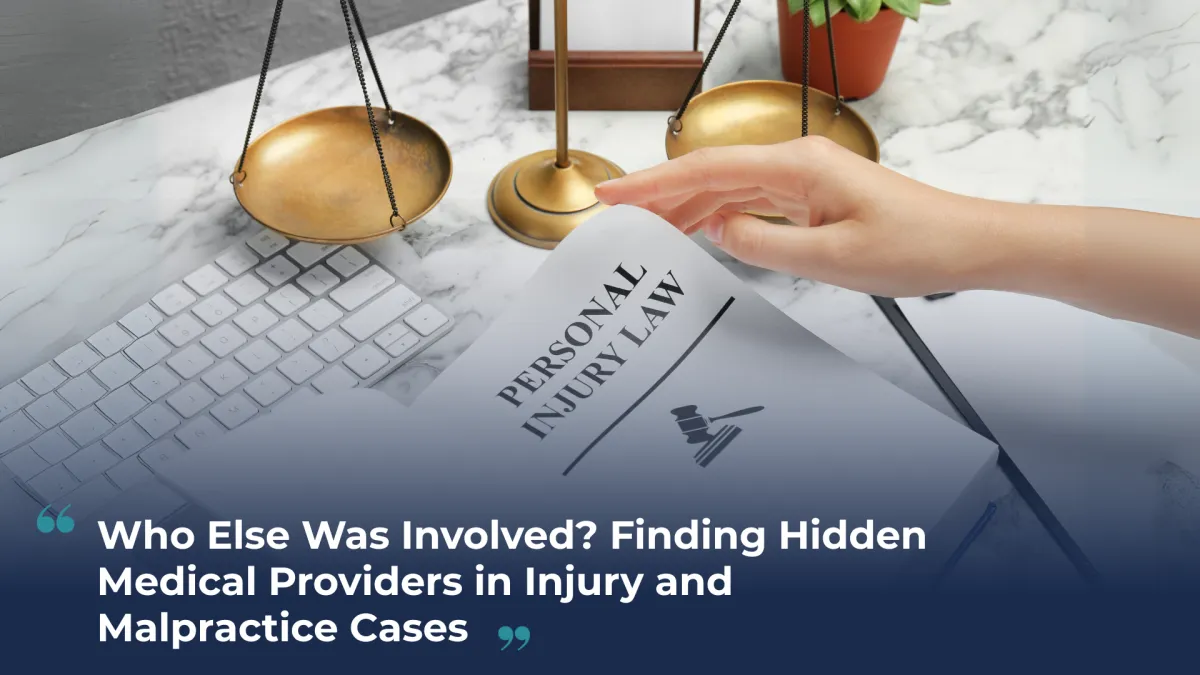
Legal Strategy Briefs
Who Else Was Involved? Finding Hidden Medical Providers in Injury and Malpractice Cases
Identifying every medical provider involved in a patient’s care is crucial for building a complete and accurate case. Unfortunately, standard medical records don’t always capture everyone. From billing data to hospital logs, here’s how to uncover the full cast of characters who may have contributed to care, injury, or recovery.
1. Start With Medical Billing Records
Billing data often reveals more than the clinical chart.
Look for Provider Codes: Identify unique NPIs and match them to databases.
Match Charges to Services: Review CPT and ICD codes for who performed what.
Spot Secondary Providers: Charges may reflect involvement from physician assistants, techs, or specialists not named in the main record.
2. Analyze Ancillary Logs and Facility Records
Many departments document “care related” activities outside the main chart.
Infection Control Logs: Track surgical site infections or outbreaks.
Operating Room Records: Include surgical techs, circulating nurses, and assistants.
Sterilization Logs: Reveal equipment-related issues.
Pharmacy Dispensing Records: Verify medications administered vs. prescribed.
3. Review Staff Scheduling and Shift Reports
Scheduling data can confirm which staff were present during treatment.
Match Staff to Timeframes: Shift schedules help confirm who was on duty.
Nursing Shift Summaries: May mention specific aides or handoffs.
Transport Logs: Identify those who moved the patient between units or departments.
4. Identify Overlooked but Involved Personnel
Some team members don’t generate formal chart notes.
Respiratory Therapists: Crucial in ventilator or airway-related cases.
Clinical Pharmacists: Involved in medication reconciliation and protocols.
Lab Techs: May handle specimens or record abnormal results not noted in summary reports.
Radiology Techs: Often perform tests not interpreted until hours later.
Nursing Aides: Provide physical support and are often closest to patient activity.
5. Tap Non-Charted Systems and Surveillance Tools
Modern facilities track care across multiple platforms.
Access Logs & Badge Scans: Track room entries.
Video Surveillance: Can confirm who interacted with the patient.
QA or Risk Management Logs: May flag events that don’t appear in the EMR.
6. Verify with External Sources
Sometimes third-party records provide what the hospital omits.
Outsourced Imaging or Labs: Request original reports or logs.
Home Health or Rehab Providers: Maintain separate documentation.
Pharmacies & Durable Medical Equipment Vendors: Confirm dispensation and delivery timelines.
DocketDoc Strategy Tip:
We help law firms and insurance teams trace full care timelines using facility-based metadata, billing records, and expert guidance. This allows for a more complete picture of liability, witness identification, and testimony coordination.
Need help uncovering the full provider trail in your case?
Request Investigative Support
